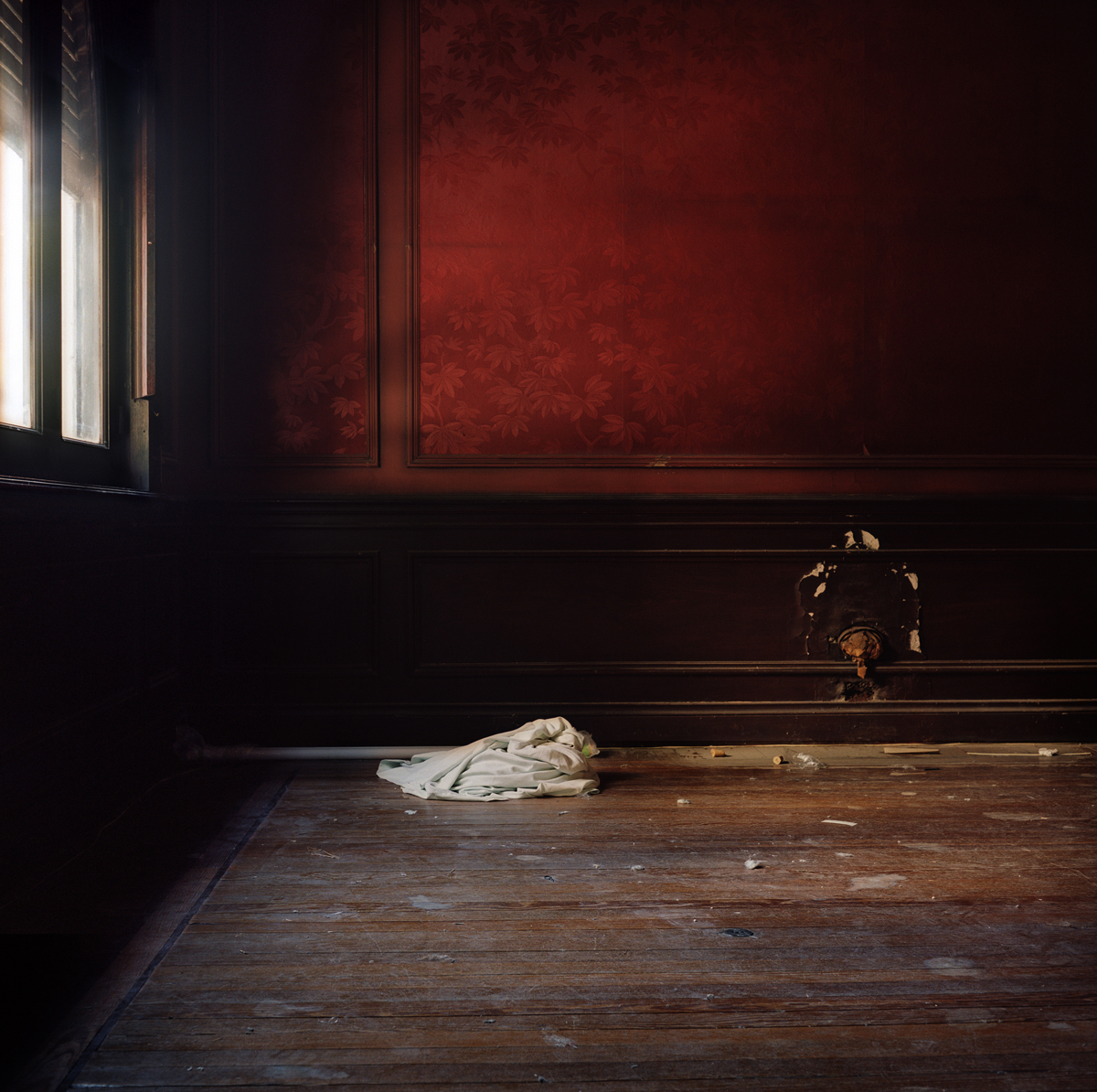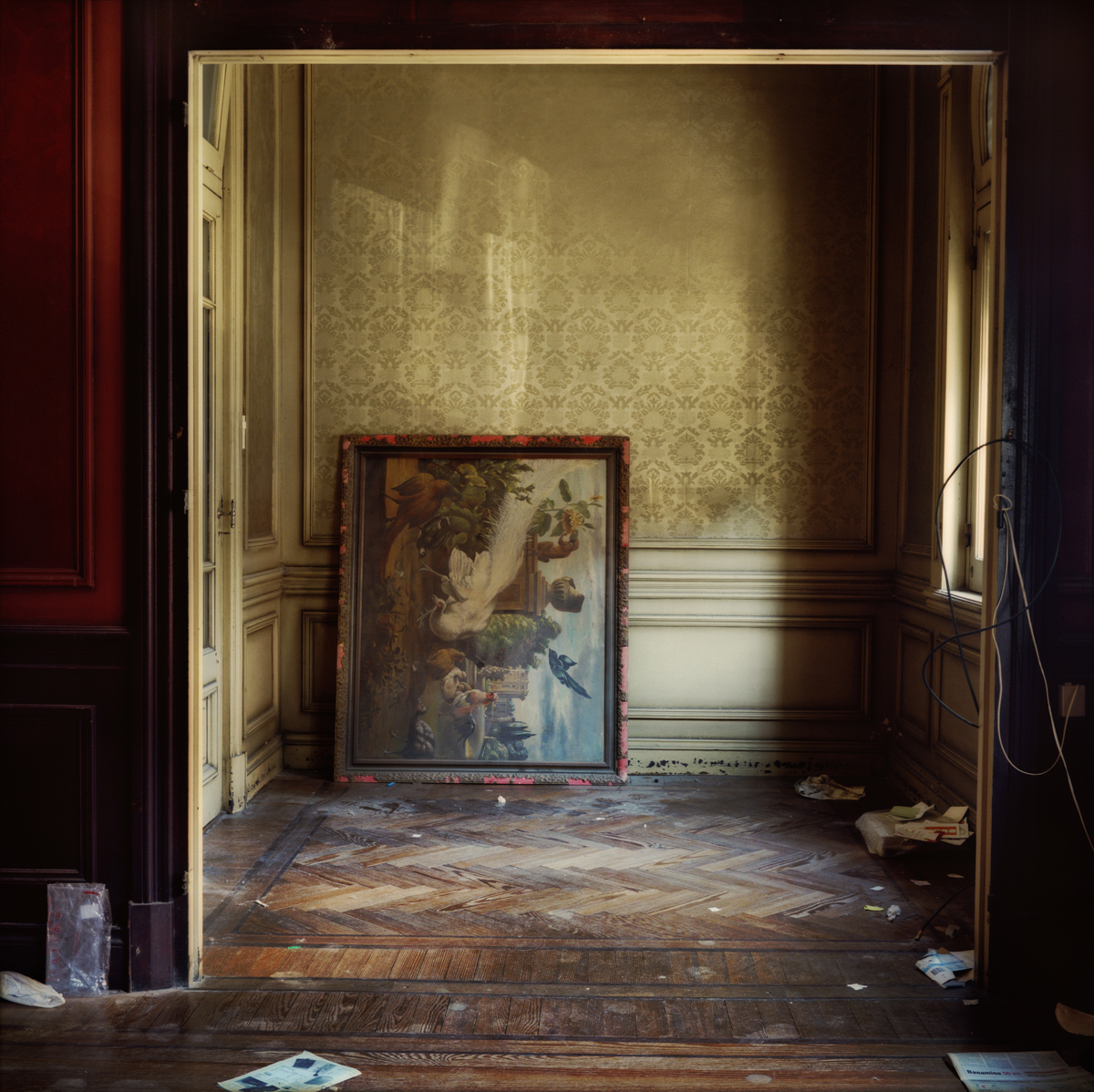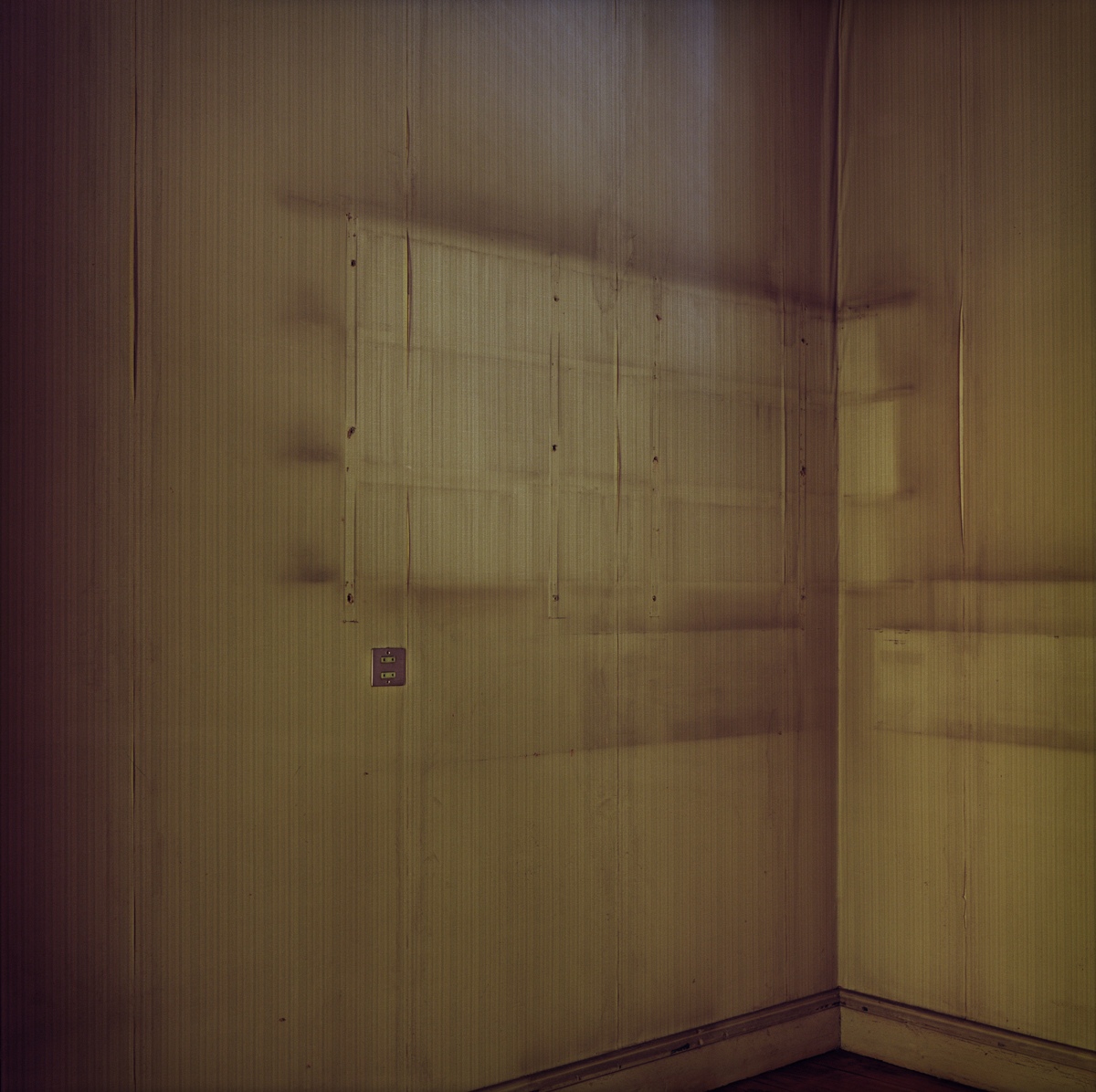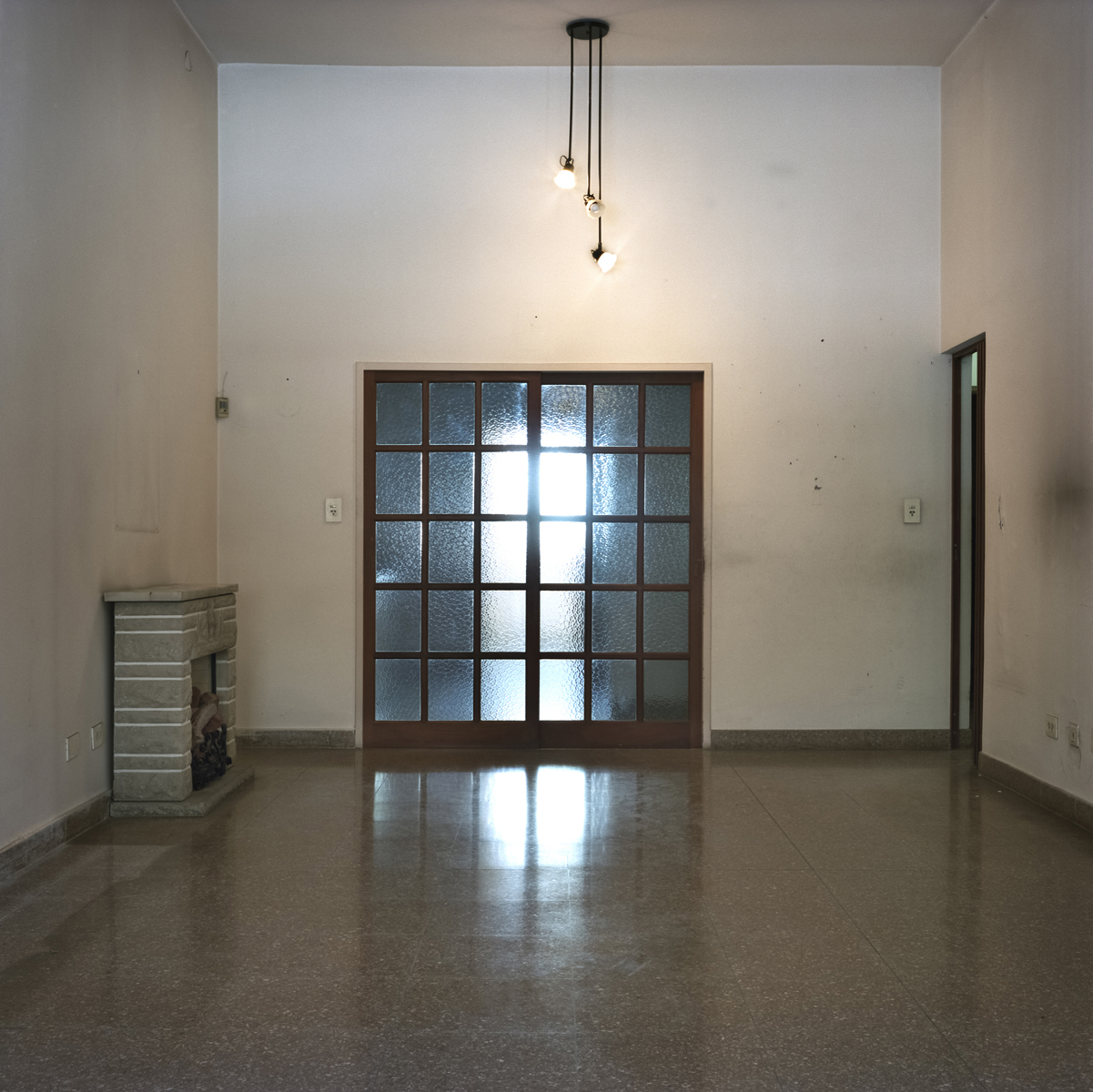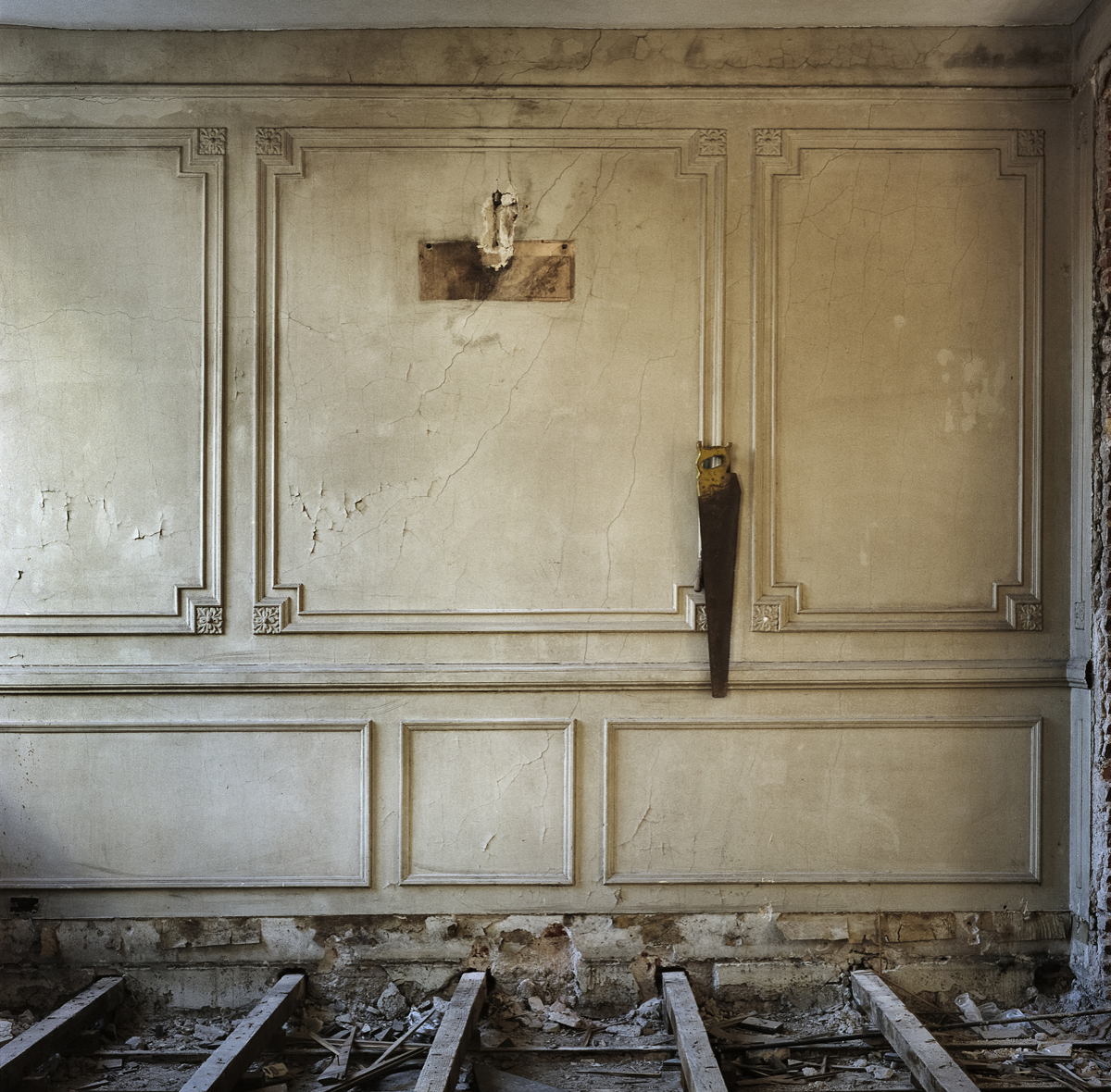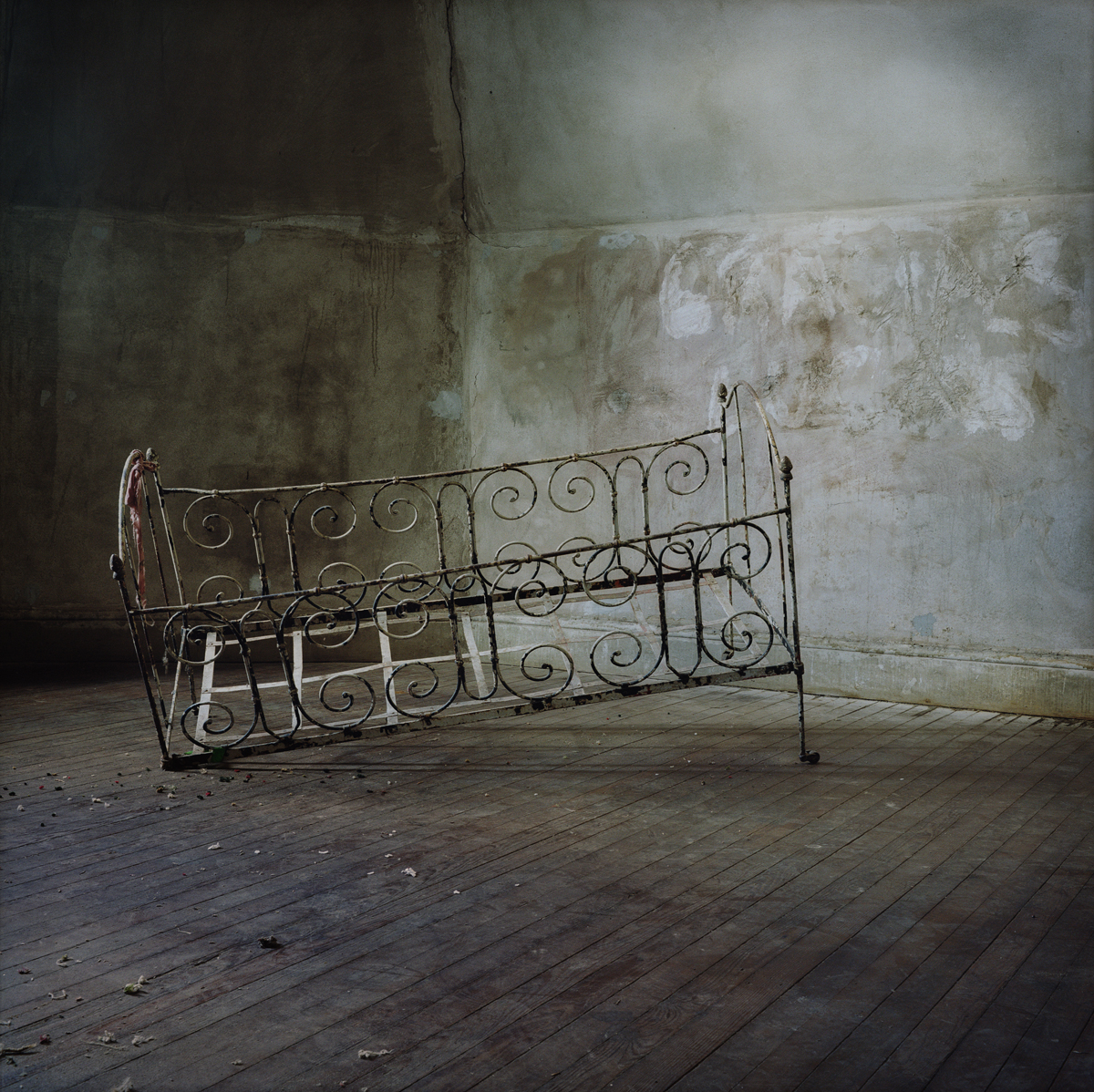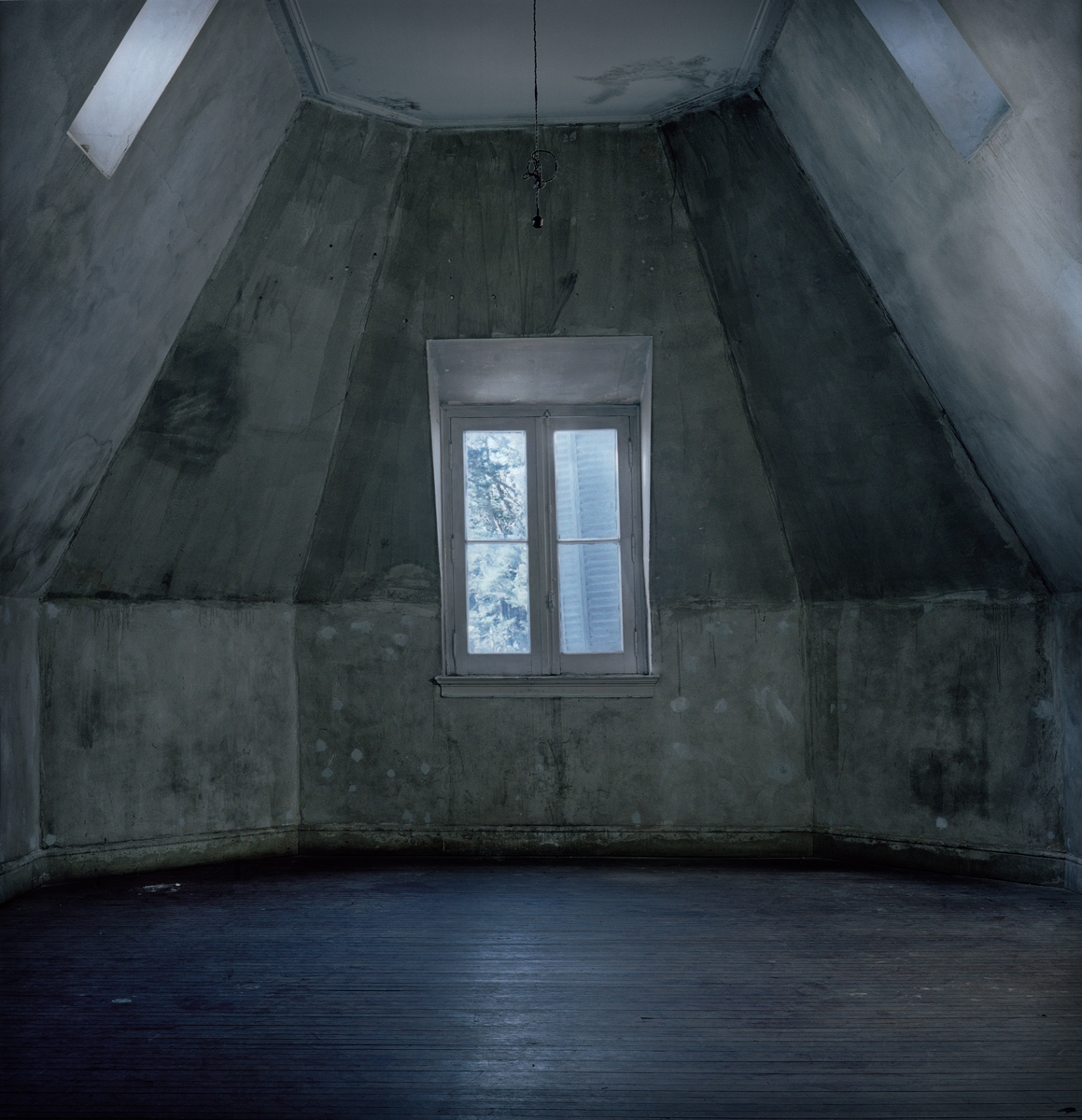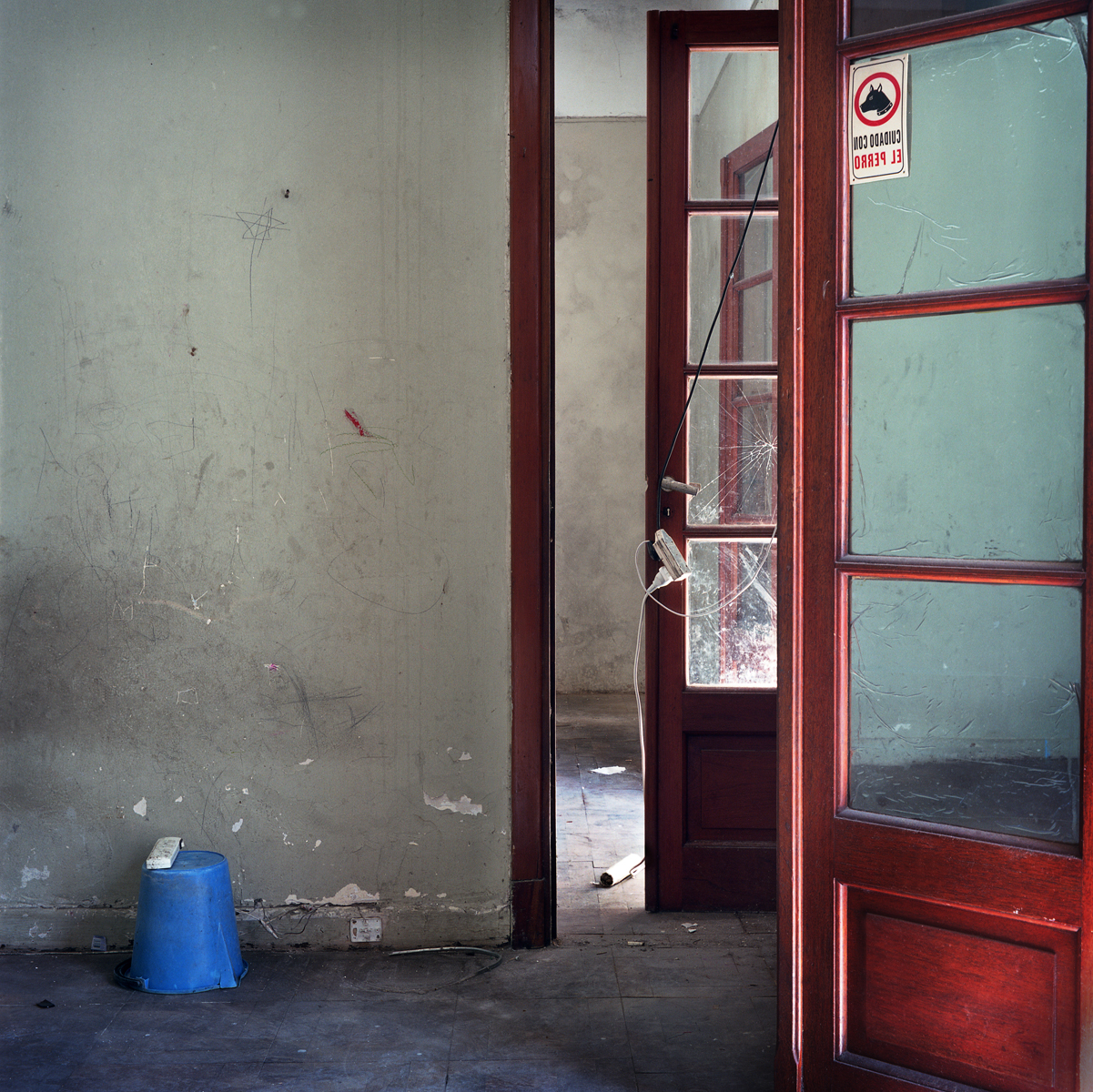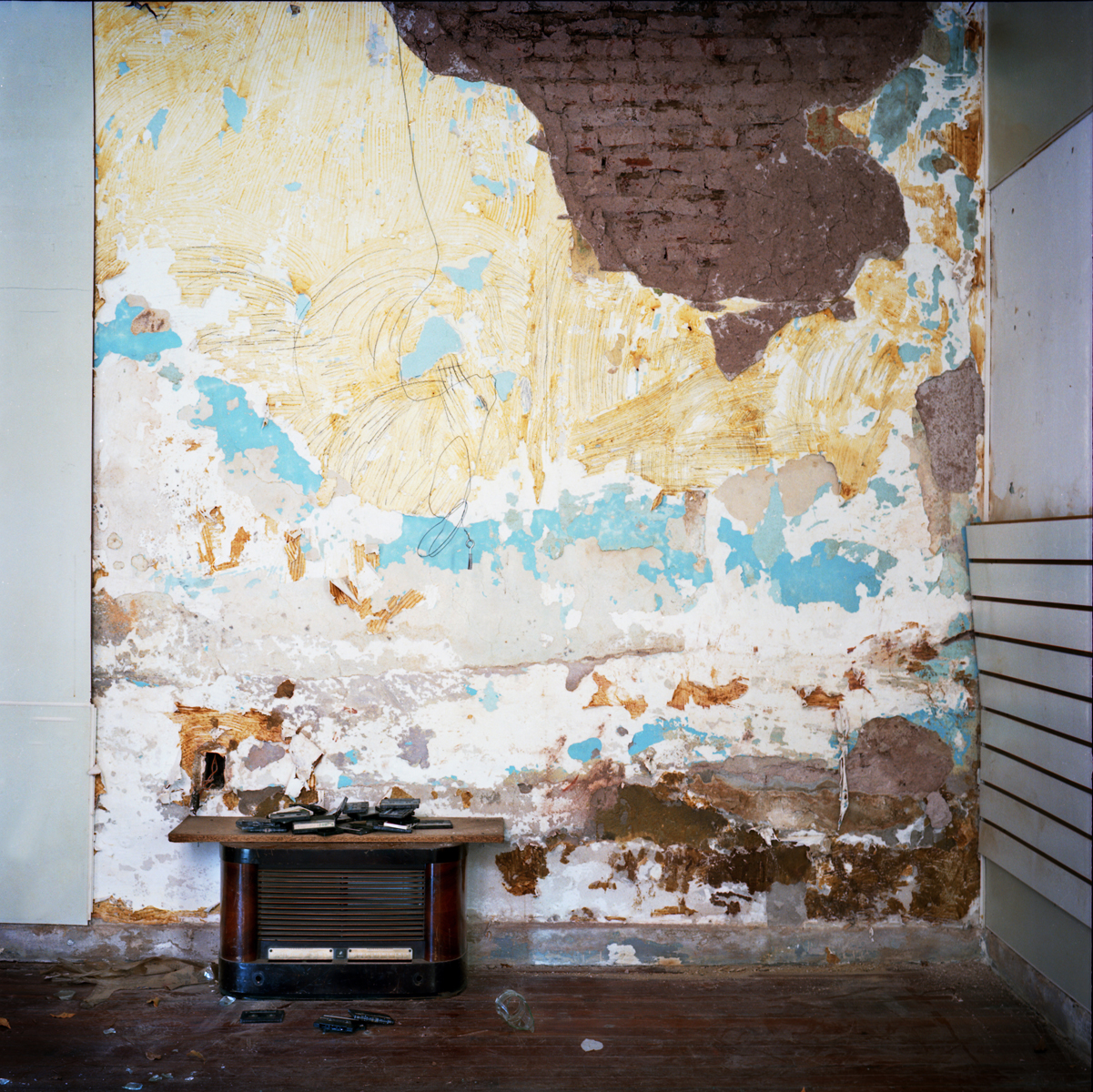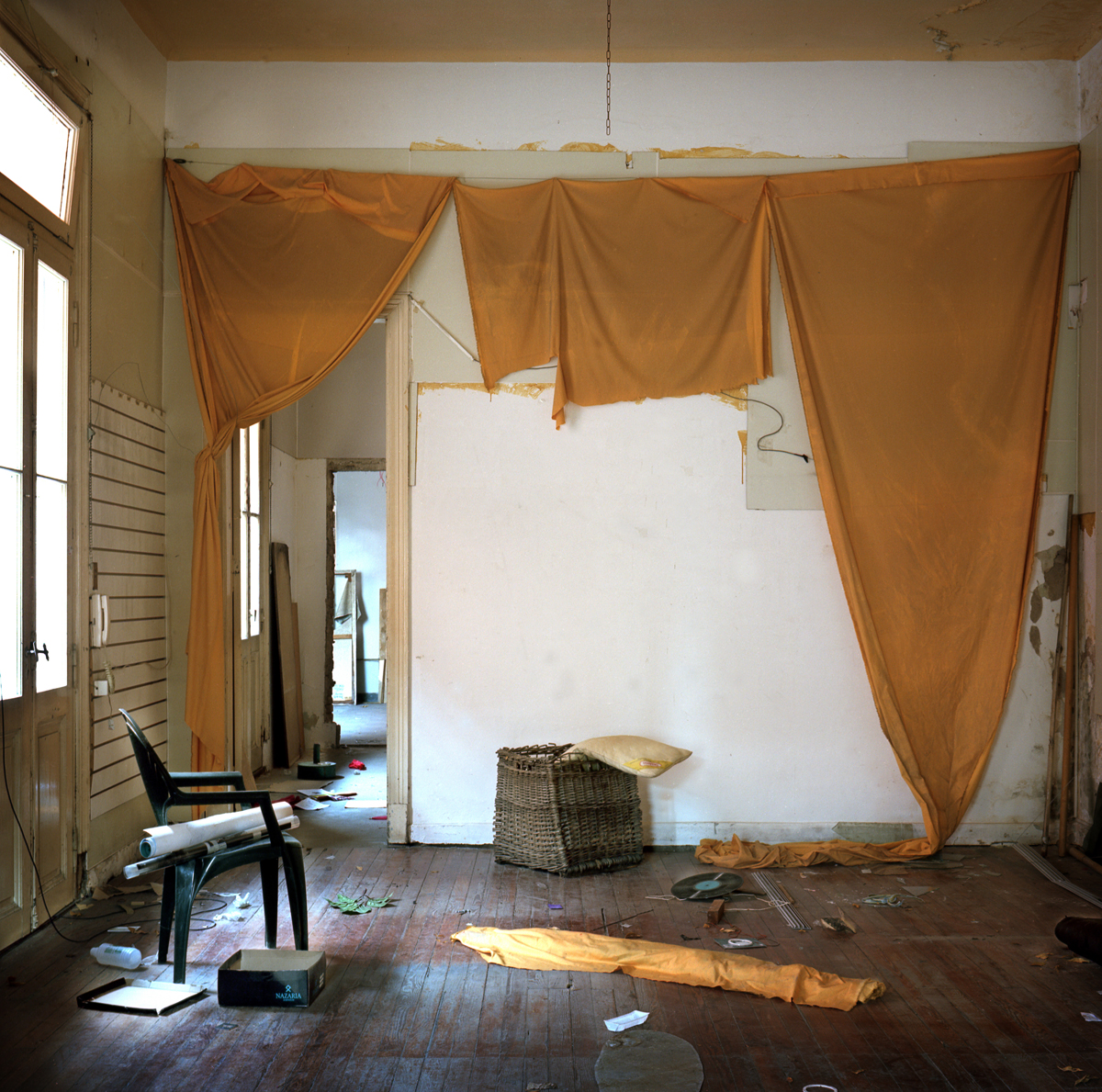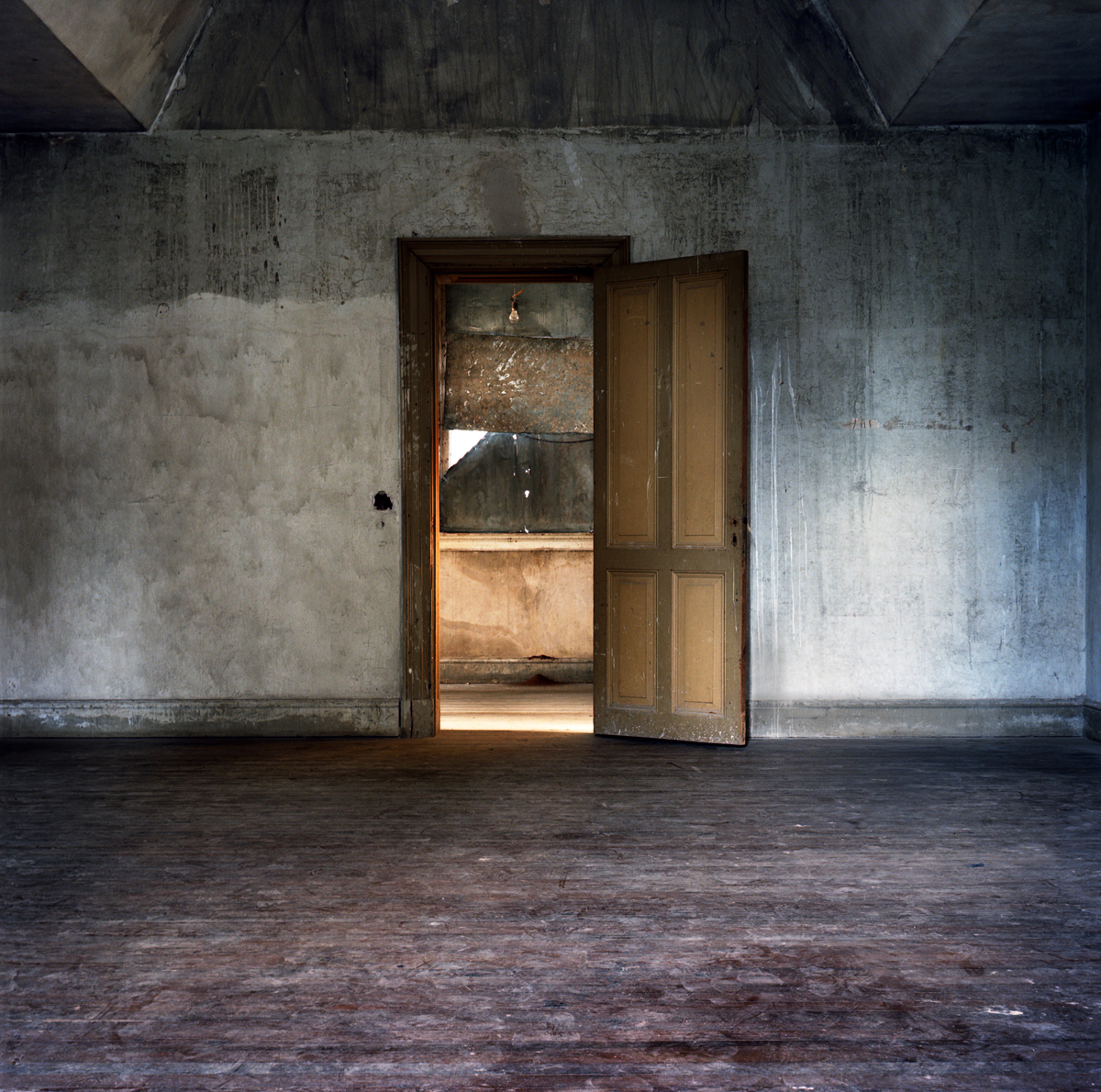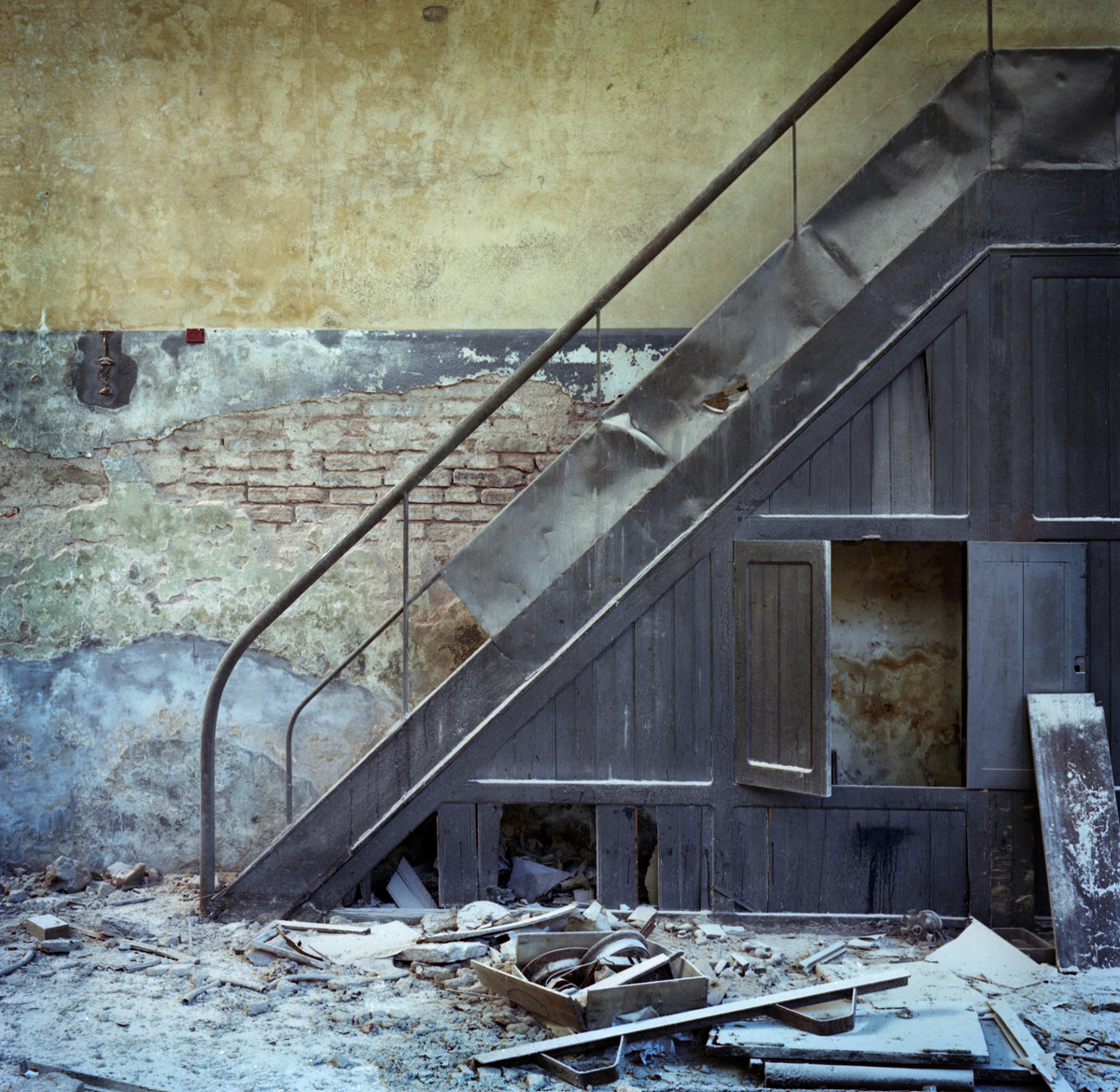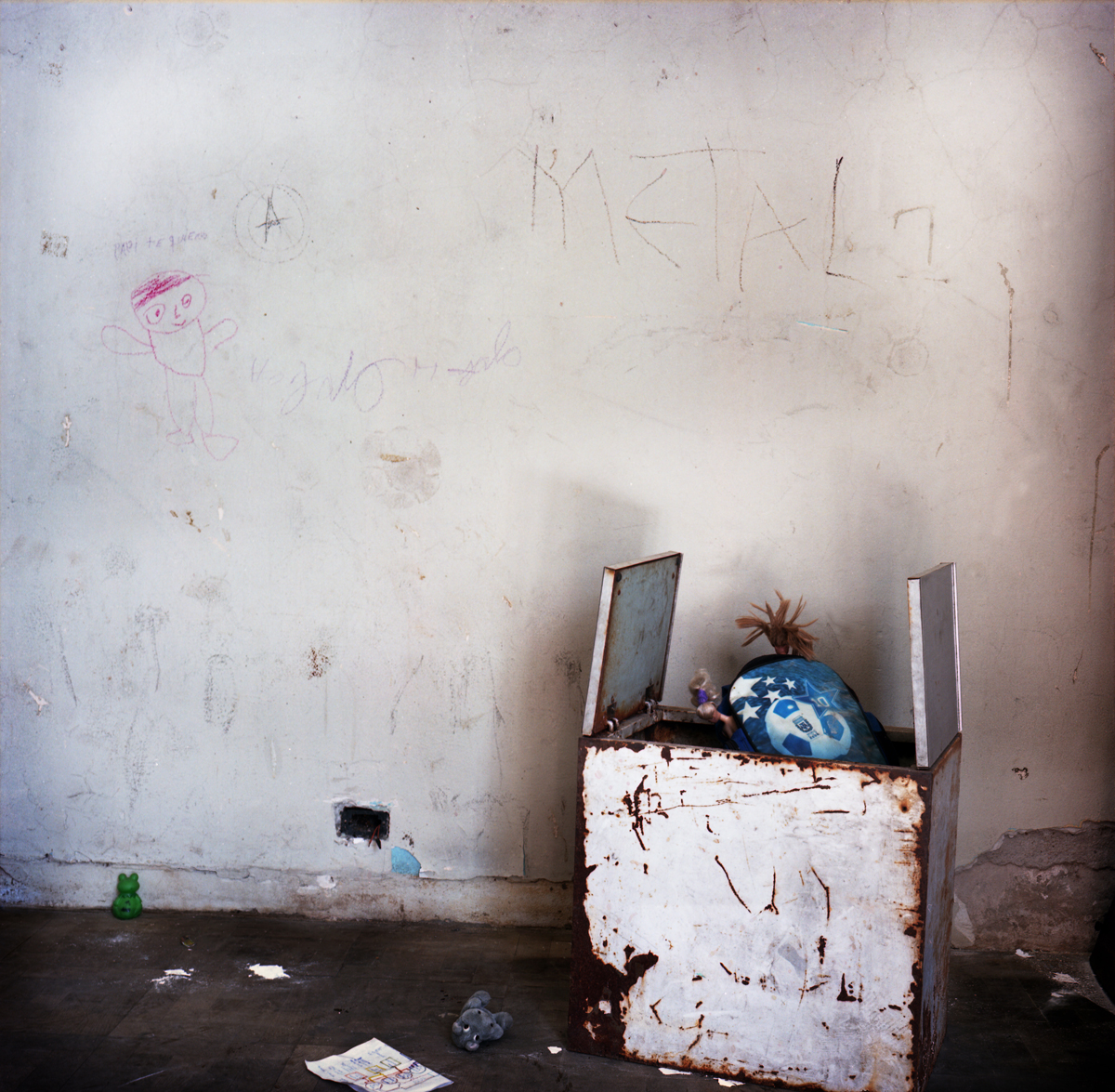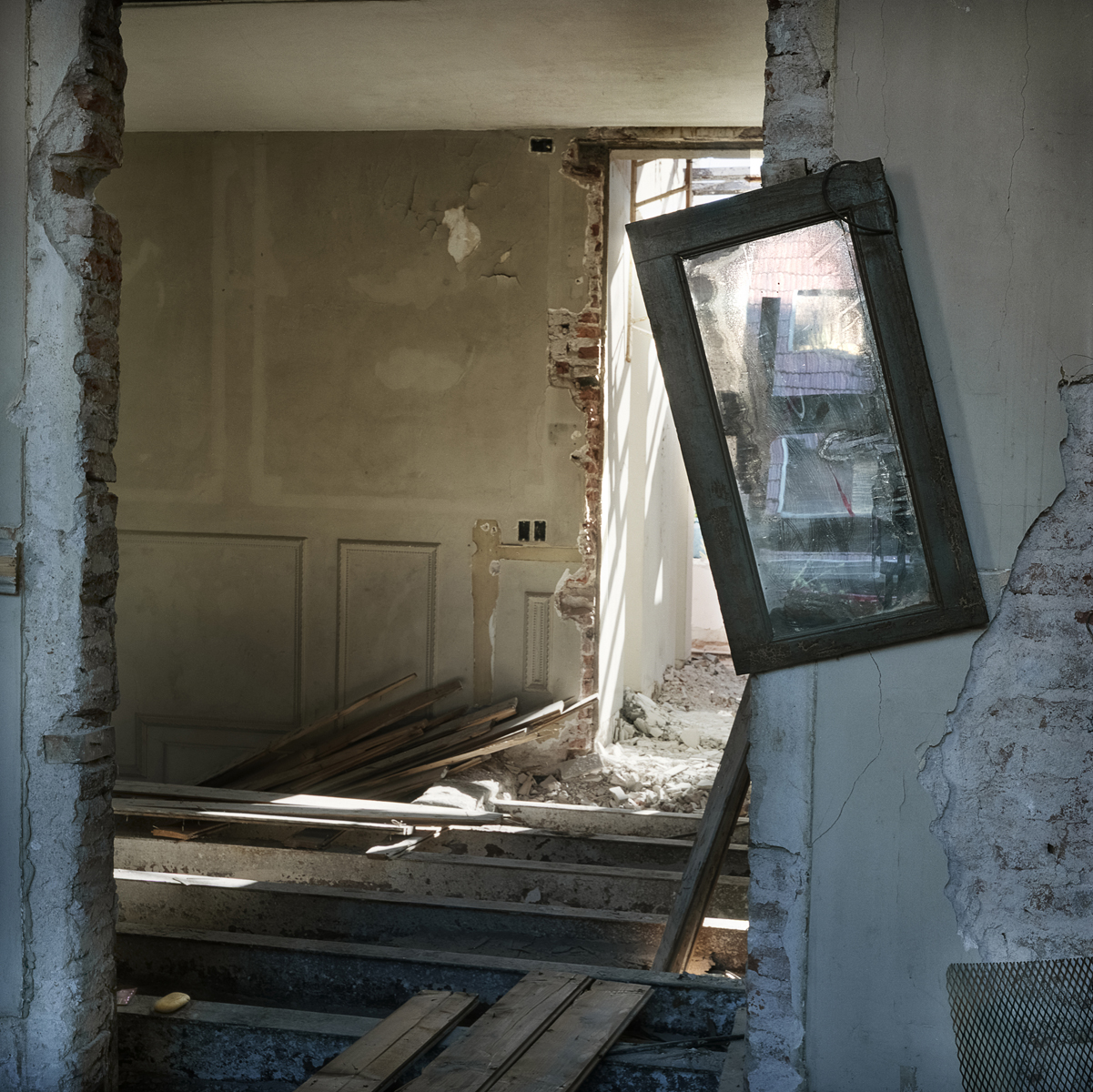Maria José D’Amico
Maria José D'Amico
Bien de Familia
October 2 - November 3, 2013
Artist Maria José D'Amico prefaces her series Bien de Familia with a line from Leo Tolstoy's Anna Karenina: "Happy families are all alike; every unhappy family is unhappy in its own way."
Bien de Familia is a haunting and bittersweet tribute to the people who once inhabited the various spaces D'Amico finds and photographs. In the spirit of Tolstoy, the unsettling sadness conveyed by each image through the clutter of partial demolition or peeling wallpaper, leads us to imagine the unique dysfunction that may have lived in these rooms. Yet, ironically, D'Amico's title brings together the words "bien" and "familia," which mean "well-being" or "good" and "family" in Spanish, respectively. The phrase, "bien de familia" also has a legal meaning specific to Argentina; a policy of the same name grants registered family homesteads protection from government seizure and taxation. But, as these images reveal, what can protect these homes and their memories, now that their families have abandoned them?
"I believe places speak of people better than people themselves. I see their traces as if they were photographic negatives of the people who lived there; the absence of human beings highlights the meaning of their presence. Most of these houses will either be demolished, re-inhabited or crumble in litigation. But there is one thing in common: the stories within them will disappear forever."
Maria José D'Amico was born in 1972 and lives and works in Buenos Aires, Argentina. She studied cinematography and worked in advertising before beginning her career as a freelance photographer. D'Amico teaches at the Argentine School of Photography and is a producer at the television channel "Conexión Educativa" in Buenos Aires. The artist's photographs have been exhibited at the British Art Centre, FotoGalería del Teatro General San Martín, and Centro Cultural Recoleta in Argentina; Paraty em Foco in Brazil; and Archivo de Bogota in Columbia. Her work is housed in the collections of the Asociación de Cultura Inglesa and the National Academy of Arts, Argentina.


